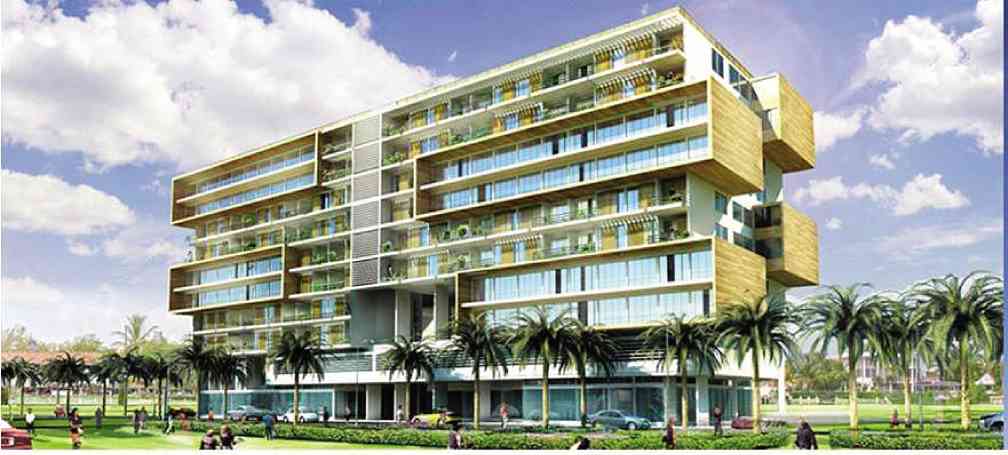Italian firm draws inspiration from ‘bahay kubo’
Italy and the Philippines have a long, shared history together. Filipinos comprise the sixth largest foreign population group in Italy, and the second largest group of Asians.
Italy is also the second most popular destination for overseas Filipino workers in Europe.
But while many Filipinos choose to seek opportunities in Italy, architect Romolo V. Nati, CEO of Italpinas Development Corp. (IDC), saw opportunities in the Philippines instead.
His love for this country and the huge potential that he sees in its sustainable development market prompted Nati to pack his bags and move to Manila from Rome.
Established in 2009, IDC is an Italian-Filipino design-driven developer of sustainable properties in emerging cities in the Philippines.
Article continues after this advertisementAmong them its flagship property Primavera Residences in Cagayan de Oro, winner in the 2014 Asia Pacific Property Awards given in Kuala Lumpur.
Article continues after this advertisement“When I came to the Philippines in 2005, everyone I met was like a relative to me. Immediately, I liked it and thought that maybe, this was a place I wanted to invest in,” recounts Nati. “I really felt at home. Many people don’t realize it but Italy and the Philippines share a lot of things in common. We have the same sense of humor, love for food, and this distinct zest for life.”
From that first visit, Nati knew he wanted to put up a design and development company in the Philippines.
An introduction to businessman Jose D. Leviste III saw his idea come to fruition.
Leviste was impressed by the Italian architect’s belief in the growth opportunities in the Philippine real estate business, as well as his dedication to sustainable architecture.
Together, they set up IDC in response to the need for genuine sustainable development in the country.
Nati first developed a love for architecture traveling around cities such as Hong Kong, Singapore, New York, and Chicago when his father worked with Alitalia.
Inspired by different architecture movements, he decided to practice sustainable architecture, studying design’s relation to nature.
“I realized that nature was designed specifically to adapt to the environment rather than the other way around. In architecture, we call it biomimicry, something we apply at IDC. Basically, you build based on the condition of the environment,” he explains. “Sadly, many of the buildings in Manila, especially, are not adapted to the climate.”
The “bahay kubo” concept is one of the best examples of sustainable architecture the country can look into, Nati says.
“I really like the bahay kubo concept. It has air vents on the sides, floor, and roof for air circulation plus a space that serves many functions. This, to me, is a great example of sustainable architecture,” he says.
One of the biggest misconceptions Filipinos have about sustainable development is that it’s always expensive.
Nati and IDC like to prove otherwise.
“At IDC, we advocate something called passive green design. Rather than installing expensive machines to keep a building green, we make the design itself incorporate green features. For example, we can add shades onto the design of a building so that the sun doesn’t directly hit it,” he says. “Not only is this going to save us on building costs, but it also introduces more people to green design because now, they can afford it.”
One of the biggest issues Nati has observed is the overcrowding in major cities such as Metro Manila.
“There’s a study that states that around 59 percent of the world’s population live in big cities, despite them only accounting for 2 percent of land. This leads to bigger problems such as overcrowding, traffic, and pollution,” he says.
The solution, he says, is to encourage growth and development in other, smaller cities to decongest the bigger cities.
“In Europe, you don’t have just one big city per country that everyone moves to. What they do is develop multiple cities with their own thriving economy. In Italy, for example, it’s not just Rome, there’s also Milan, Florence, Venice, and others. I think this could also work for the Philippines,” Nati says.
Due to globalization, cheaper flights around the country, and the Internet age, many businesses have been attracted to invest in smaller cities.
In fact, a study states that there’s an 8-percent growth in people moving back to their home cities. This is an opportunity Nati wants to take.
IDC has trained its sights on secondary cities in the country. Rather than basing most of its developments in Metro Manila and Cebu, the company invests in smaller cities—largely untapped markets that need to be served.
The IDC team researches on every possible location to see if the planned property will not just be feasible, but also purposeful.
“Now that there’s tremendous growth in the secondary cities and companies have started to set up shop there, we’re encouraging people to return home and invest through our developments,” Nati explains.
